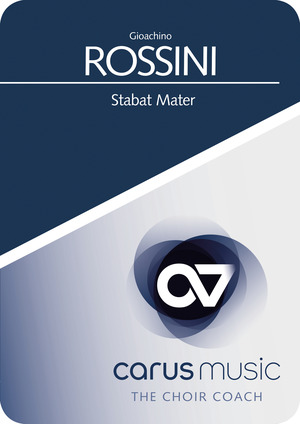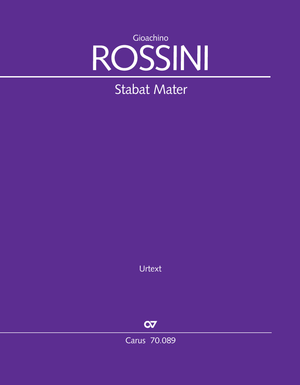
The Stabat mater occupies a special place in Rossini’s output: it was written over a ten-year period in two phases of composition (1831–41). In this work Rossini uses the typical musical means of chromaticism and sighing motifs to express the pain of Mary’s suffering on Jesus’s crucifixion. The choral highpoint of the composition is the spirited concluding fugato in which the mourning, lamenting introductory music of the opening movement is woven in, in richly varied fashion. But the greatest challenge for the choral singers lies in doing justice to the different styles of the movements – from the sacred to the operatic.
Please note: bars 22-28, 69-86 and 99-105 of the last movement "In sempiterna saecula" are not included in carus music.
Simply practice. Anytime. Everywhere.
Whether at home on your tablet or PC or on the road on your smartphone: with carus music, the Choir Coach, you always have your choral works with you to practice! With the carus music choir app, you can listen to your score together with a first-class recording on any device and easily practice your own choir part with a coach. With carus music, your concert preparation is easy, efficient and fun to master!
Performers: Maria Stader (soprano), Marianna Radev (alto), Ernst Haefliger (tenore), Kim Borg (basso) - RIAS-Kammerchor, RIAS-Knabenchor, Berliner Mädchenchor, Chor der St. Hedwigs-Kathedrale, RIAS-Symphonie-Orchester, Ferenc Fricsay
-
Composer
Gioachino Rossini
| 1792-1868
-
Ensemble
RIAS Kammerchor
Frequent questions about this work
 There are no questions and answers available so far or you were unable to find an answer to your specific question about this work? Then click here and send your specific questions to our Customer Services!
There are no questions and answers available so far or you were unable to find an answer to your specific question about this work? Then click here and send your specific questions to our Customer Services!




